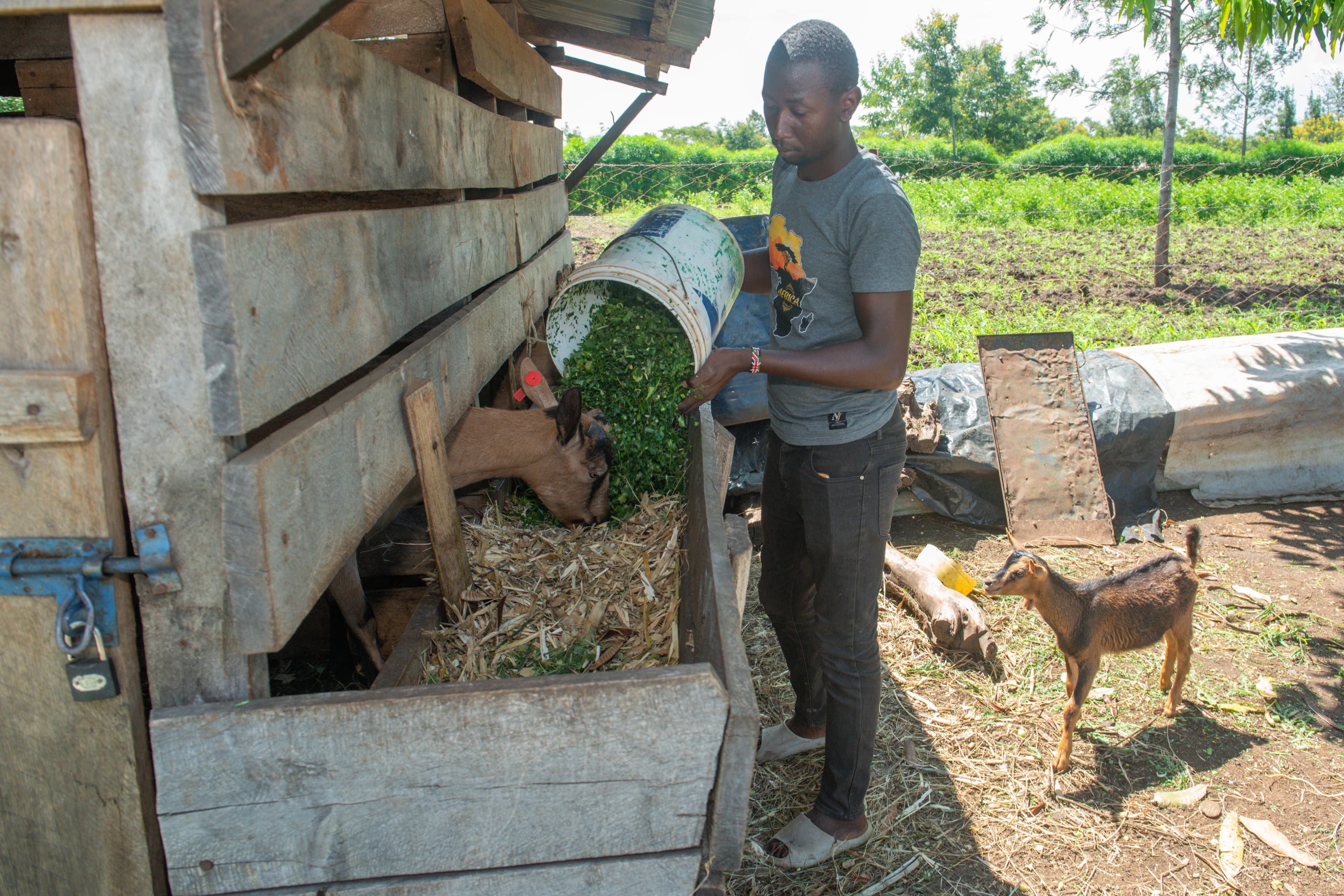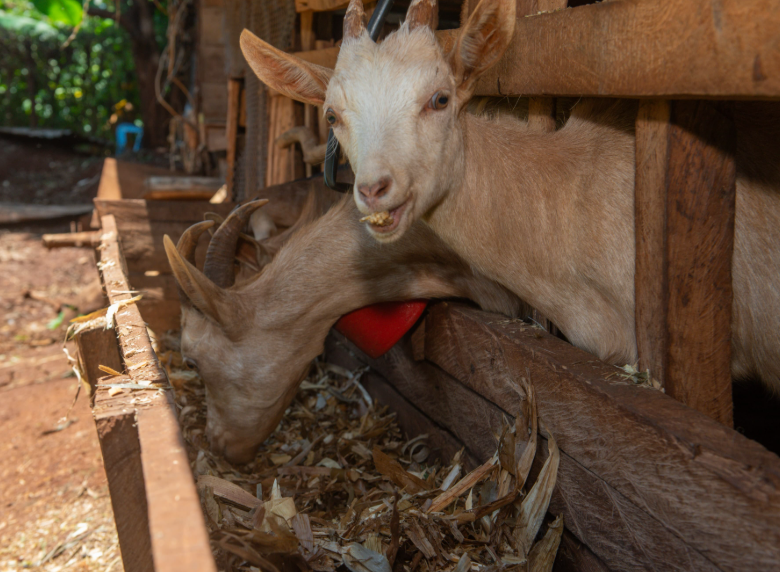
Robinson Karuri, one of the beneficiaries of the AI programme, feeds goats at his farm in Kirinyaga /ALICE WAITHERA
Farmers in Kirinyaga county are experiencing the positive outcomes of a goat artificial insemination programme, designed to enhance goat productivity and boost farmers’ incomes.
The programme, a collaborative effort between the county and the Goat AI Centre located at the Kenya Animal Genetic Resources Centre (KAGRIC) in Kutus, is delivering significant improvements for small-scale farmers.
The centre was officially opened by President William Ruto during his week-long tour of the Mt Kenya region.
Governor Anne Waiguru praised the initiative as a game-changer for livestock farming and a major step towards food security and strengthening the economy.
“We are honoured to host the Goat AI Centre at Ndomba. It’s not only a valuable asset for our county but also a key development milestone for the country. This centre represents a significant advancement in improving goat production and food security,” Waiguru said.
The initiative aims to equip farmers with technology, quality breeds and the necessary skills to increase productivity, transforming goat farming from a traditional subsistence activity into a modern, profitable agribusiness.
Farmers are reaping the benefits through the provision of subsidised hybrid goat semen and liquid nitrogen, at a cost of Sh354,000 to the county government.
Through the goat improvement programme, the county has also supported 600 goat farmers, organised into 60 groups.

These groups have gained access to goat kids, does and community bucks to improve breeding practices.
The centre will improve farmers’ access to high-quality breeds, Waiguru said, leading to increased milk and meat production and consequently, improved household incomes and livelihoods.
She added that trained inseminators have been deployed across the county, ensuring timely and effective services.
The county government has also been raising awareness among farmers about the importance of AI and subsidising the cost of services to make them more affordable, compared to private sector rates.
“With the right genetic improvements and more efficient farming practices, we can unlock the full potential of goat farming and provide a steady supply of quality products to meet expanding markets,” Waiguru said.
The governor highlighted that goat products are in high demand from hospitals, hotels and restaurants, presenting a lucrative opportunity for farmers.
“The new breed of goats are now growing faster and I now have a larger herd. Milk production has increased and so have my earnings,” he said.
Njoroge has nine goats, each producing approximately two litres of milk daily, which he sells at Sh170 per litre to a company based in Thika.
This represents a significant improvement from the less than one litre produced by the lower breeds he previously owned.
Another farmer, Robinson Karuri from Kithiriti, has eight goats produced through the initiative.
“I am happy because I recently acquired goat kids of the Agro-Nubian breed, which are strong and produce a lot of milk. We use some at home and sell the rest,” Karuri said.
The subsidised AI services from the county government have provided significant relief to farmers, he said, as private practitioners charged Sh5,000 to inseminate just one goat.
Unlike larger livestock such as cattle, goats are cheaper to keep as they require less space and feed, making them ideal for smallholder farmers, Karuri explained.
Goats take seven to twelve months to mature and have a gestation period of five months, unlike cows which take nine months, allowing for faster herd growth.
He added that goats are more adaptable to dry conditions than cows, making them a sensible choice for regions affected by climate change.
Goat milk is considered a healthier alternative to cow milk due to its easier digestibility and immunity-boosting properties.
“The high demand for goat milk is driven by its health benefits, as it is suitable for people with lactose intolerance and allergies, as well as infants and the elderly,” he concluded.




![[PHOTOS] Gachagua warm reception in Nyandarua](/_next/image?url=https%3A%2F%2Fcdn.radioafrica.digital%2Fimage%2F2025%2F04%2Fc2a8c64d-5577-4768-a0ac-513c8876c288.jpeg&w=3840&q=100)






